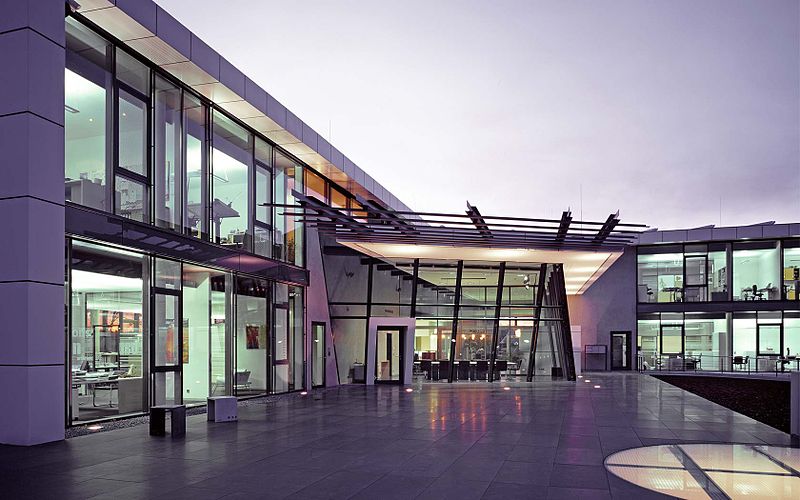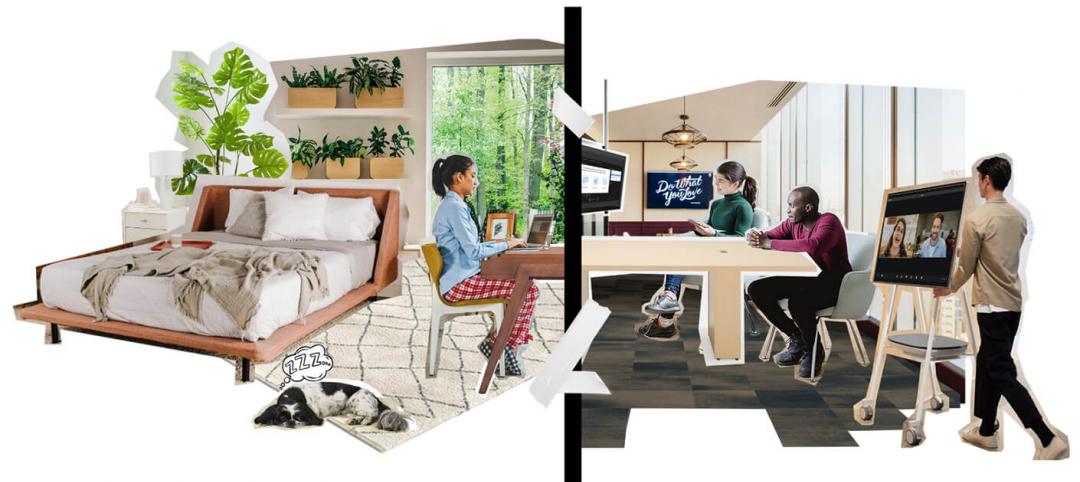We’ve read that some lessons can’t be taught; they have to be learned. In the last fourteen years with Perkins+Will, we’ve worked on over 200 workplace projects and we’ve learned a slew of interesting things. Our biggest surprise? Most lessons have nothing much to do with the physical space. Perhaps your first reaction is “Lucy, you’ve got some ‘splaining to do!” Yep, we do. Here’s what we know:
1. Mobile isn’t always mobile. To quote from "Princess Bride," "You keep using that word. I do not think it means what you think it means." Depending on the organization, mobility can mean onsite mobile, mobile on campus, or work from anywhere. Determine what mobile really means to the organization and then to build a strategy around it.
2. Create an integrated team. The key players—real estate, human resources, information technology—are easy to identify. But given these entities have independent budgets, schedules, strategy, and delivery, it takes trust-building, budget revealing, and schedule gnashing work to integrate. But once it comes together, it’s the most powerful tool in the workplace arsenal.
3. Pilot, then pilot, then pilot. Not even airline pilots come as singles. They all have backups. Mobile work pilots are the same. Multiple pilots provide lessons over time, allowing the tuning necessary for any strategic change. Keep piloting.
4. Avoid the pain of quick decisions. We often hear that real estate has a workplace emergency. There’s often a rush to get a pilot ready, to house employees from recent acquisitions or take advantage of a lease deal. Quick decisions drive commitments in occupancy that may play out over the life cycle of multiple leases becoming weights that carry performance implications for people as well as portfolio. Avoid that pain. Plan ahead.
5. Find complementary funding. We can’t tell you how often we hear, "that’s not in my budget." To make mobility work, it has to be in all budgets with a coalesced plan of action. The good of the company, the performance of its people, and the balanced cost model to allow that to happen should be the target. Learn how to complement one another to make this happen.
6. Assume continuous learning. You won’t get it right every time. It’s a time of tumultuous change as we refine our personal lives to be more connected, digital, and immersive. When the world is changing, we know that we can get close in workplace, but we also know that we’re part of a continuous learning cycle globally as work and life converge. Expect that to continue.
7. Expect that evolution happens. Yes, we just agreed to this, but evolution in work process is moving rapidly. We’re drowning in information and grappling with ways to make that information work harder for us. Our work processes are changing in tandem. Embrace that this evolution is active, not historical. Learn to be agile with change.
8. Build in congruence. We know what happens when one group wants to be very progressive while another prefers the status quo. There’s a tug for power, a struggle to effectively advance any idea. In order for the organization to be successful in its mobility program, the experts who lead the physical planning, the technology planning, the personnel planning, and the business need to be fully aligned with their intent. Congruence pays for itself. Create alignment and excel.
9. Set aside money for POEs. We measure projects to gain feedback from employees but then fail to put a penny in place to make any changes they suggest. If you ask for opinions on effectiveness of mobile workplace and fail to act where fine tuning is required, what’s been accomplished? It’s best to set aside money, particularly on a new mobile workplace strategy, to allow for changes to be made not only in the project, but in the overall program
10. Plan for change. This work is about capturing hearts and minds while building trust and creating new capabilities. Some will embrace change while others will struggle. We’re habitual creatures and mobile work requires new habits to be formed. Harder still, it requires old habits to end. We have to create a cohesive transition for mobile workers, providing knowledge about not only what to do and how to do it, but why it’s relevant for the organization to thrive. Plan this even more carefully than the physical environment, as it’s central to the success of any mobile work program.
Want to learn more? I’ll go into more depth for each of these points in a series kicking off in 2015. I welcome your comments in the meantime.
About the Author
As Principal and Global Discipline Leader for Planning and Strategies, Janice Barnes focuses on the ways in which planning enables clients to meet their business goals. With 25 years of design experience, as well as a significant research background, Barnes' work focuses on eliciting information on work practices and organizing this information to help clients make better decisions.
More from Author
Perkins and Will | Sep 19, 2023
Transforming shopping malls into 21st century neighborhoods
As we reimagine the antiquated shopping mall, Marc Asnis, AICP, Associate, Perkins&Will, details four first steps to consider.
Perkins and Will | Jul 20, 2023
The co-worker as the new office amenity
Incentivizing, rather than mandating the return to the office, is the key to bringing back happy employees that want to work from the office. Spaces that are designed and curated for human-centric experiences will attract employees back into the workplace, and in turn, make office buildings thrive once again. Perkins&Will’s Wyatt Frantom offers a macro to micro view of the office market and the impact of employees on the future of work.
Perkins and Will | May 30, 2023
How design supports a more holistic approach to training
For today’s college athletes, training is no longer about cramming team practices and weight lifting sessions in between classes.
Perkins and Will | Dec 20, 2022
4 triage design innovations for shorter wait times
Perkins and Will shares a nurse's insights on triage design, and how to help emergency departments make the most of their resources.
Perkins and Will | Aug 30, 2021
The great re-shuffle & re-think
In this new hybrid environment in which we cater to how our employees work best, how will we manage new hybrid work practices and etiquette?
Perkins and Will | May 18, 2020
Global design firms collaborate on new COVID-19 mobile testing lab to bring testing to vulnerable communities worldwide
Perkins and Will, Schmidt Hammer Lassen Architects, and Arup Group develop scalable solutions for increased testing capacity within high-density and under-served neighborhoods.
Perkins and Will | Jun 7, 2019
Workplace wellness: Top 3 tips for Fitwel certification
How can thoughtful design encourage healthier choices, lifestyles, and work environments?
Perkins and Will | Feb 27, 2019
ResilientSEE: A framework to achieve resilience across scales
Conceived in the Boston studio of Perkins+Will, the ResilientSEE team developed a resilient planning framework that can be applied to other neighborhoods, cities, and countries.
Perkins and Will | Nov 28, 2018
Amazon HQ2 and the new geography of work
The big HQ2 takeaway is how geography and mobility are becoming major workplace drivers.
Perkins and Will | Sep 4, 2018
It takes more than money to fund resilience
Resilient design, much like all projects in the built environment, requires funding.
















